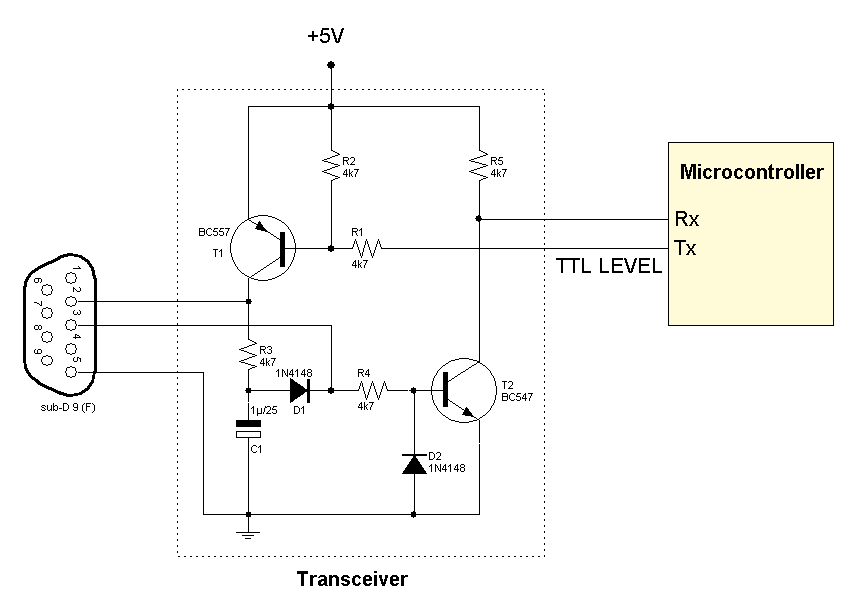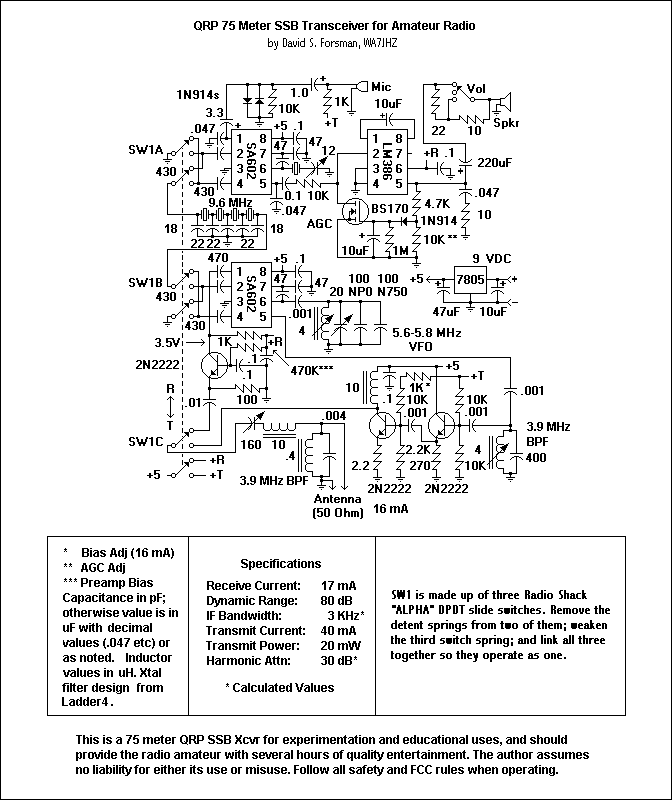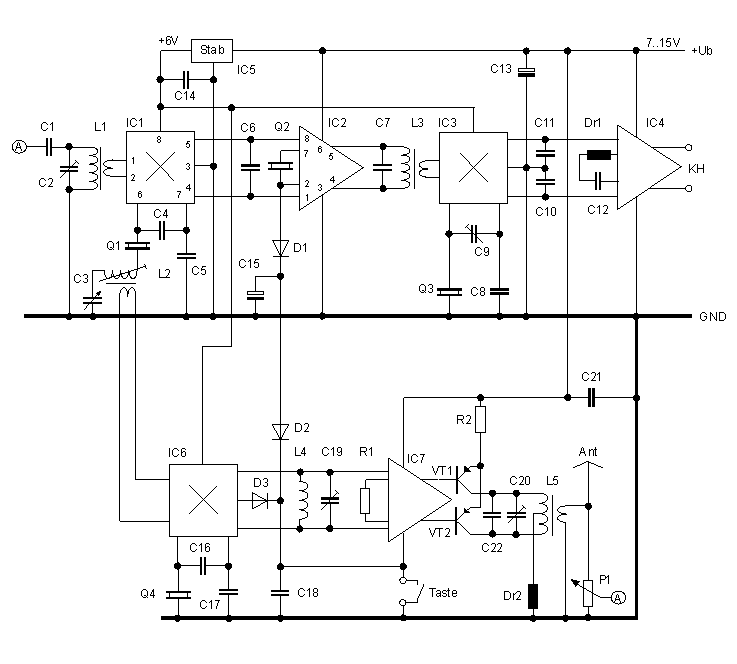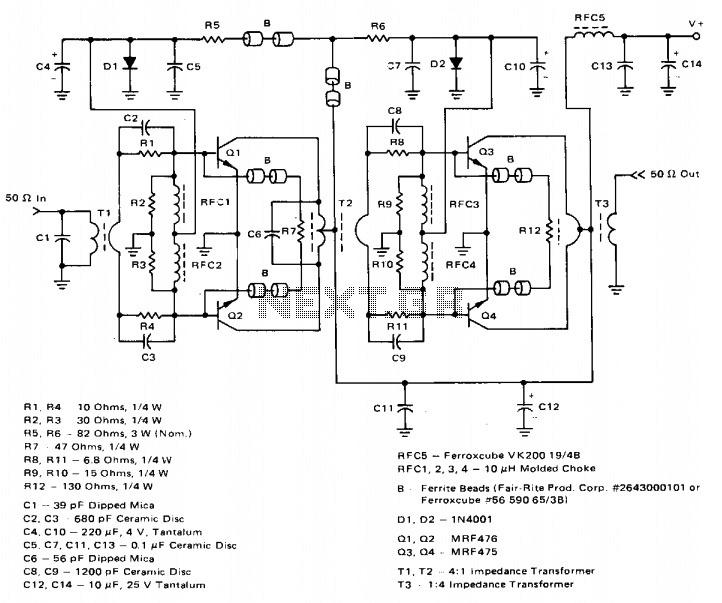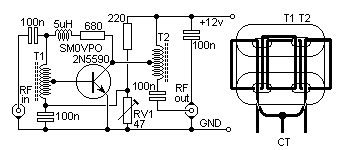
14MHz SSB 10mW transceiver
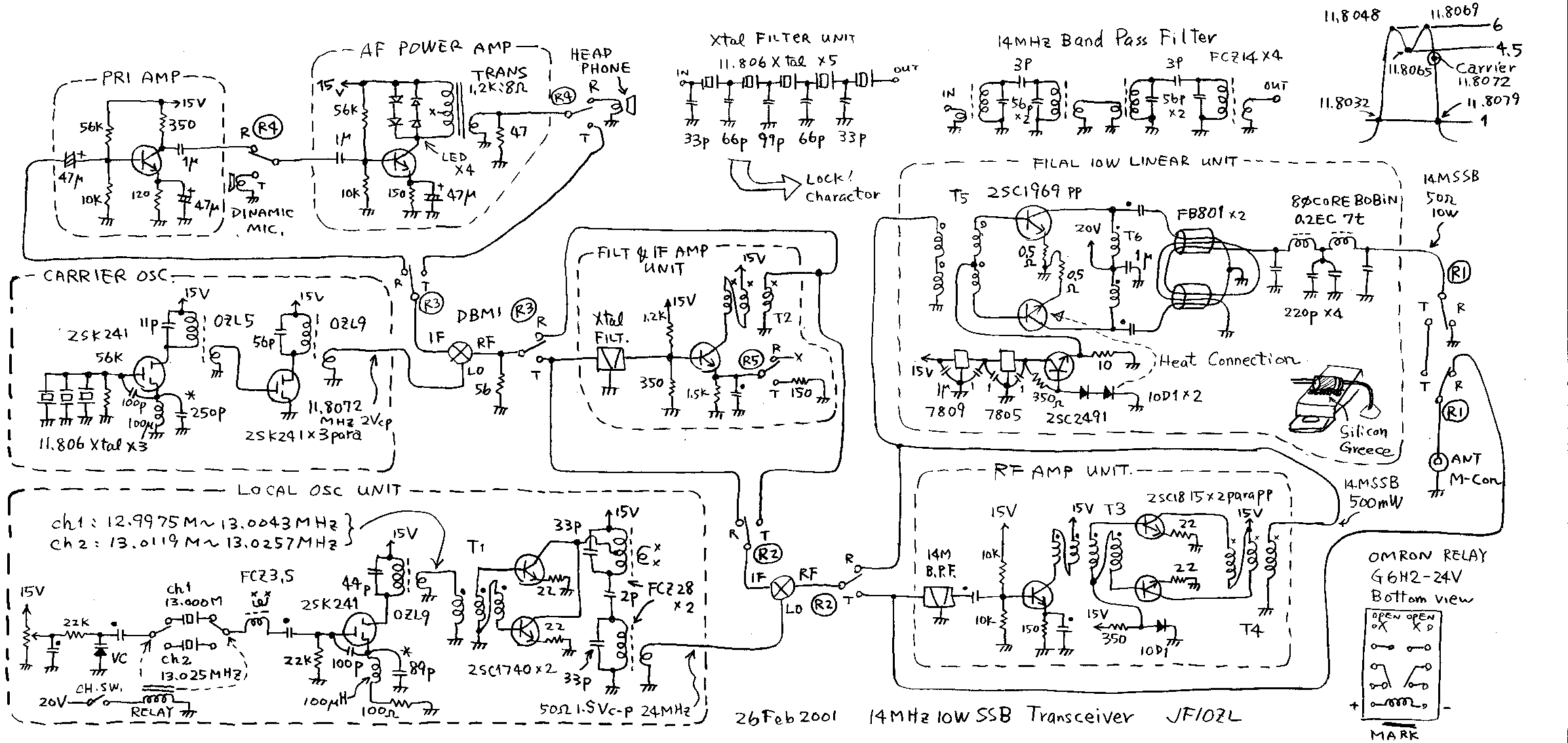
The whole Construction: You can call the transceiver like this as "OZL type". Characteristics of the "OZL type" are as follows. 1. Single conversion super. 2. Using two DBM-s as modulator and converter. 3. Modulator DBM is used as demodulator in receiving time. 4. All amplifiers are used in transmitting and receiving time. 5. Case is second use of my failed or useless machine. (This time I used my useless old 10W 7MHz transmitter.) 6. All decals are done with the "Magic ink". Very simple way! 7. Normal "OZL type" uses 12V DC power from cigar lighter of the car. More: But in this machine I used 20V DC from my DC power supply. The reason of my choosing high voltage are as follows. One reason is in order to press the variable capacitor of the VXO oscillator for its minimum capacitance and to get the highest frequency.
The "OZL type" transceiver is a compact, single conversion superheterodyne device designed for efficient communication. The architecture employs two double-balanced mixers (DBMs), which serve dual roles as both modulator and demodulator, enhancing versatility in signal processing. The modulator DBM operates during transmission, converting baseband audio signals into radio frequency (RF) signals, while during reception, it reverses this process to demodulate incoming RF signals back into audio.
The design incorporates amplifiers that are active in both transmitting and receiving modes, ensuring optimal signal strength and clarity. This dual functionality is critical for maintaining effective communication over varying distances and conditions. The physical housing of the transceiver repurposes components from a previously non-functional 10W 7MHz transmitter, demonstrating a sustainable approach to electronics by reusing materials that would otherwise be discarded.
The use of "Magic ink" for decals indicates a straightforward yet effective method for labeling and branding the device, enhancing usability without complicating the construction process. The standard operating voltage for the "OZL type" is typically sourced from a 12V DC supply, such as that found in automotive applications via a cigarette lighter. However, this specific design variant utilizes a 20V DC power supply, which serves a dual purpose: it allows for the adjustment of the variable capacitor within the VXO (Voltage Controlled Crystal Oscillator) to achieve its minimum capacitance, thereby facilitating the generation of higher frequencies. This choice of higher voltage reflects an understanding of the relationship between voltage and frequency performance in oscillator circuits, ultimately enhancing the transceiver's operational capabilities.The whole Construction : You can call the transceiver like this as "OZL type". Characteristics of the "OZL type" are as follows. 1. Single conversion super. 2. Using two DBM-s as modulator and converter. 3. Modulator DBM is used as demodulator in receiving time. 4. All amplifiers are used in transmitting and receiving time. 5. Case is second use of my failed or useless machine.(This time I used my useless old 10W 7MHz transmitter.) 6. All decals are done with the "Magic ink". Very simple way! 7. Normal "OZL type" uses 12V DC power from cigar lighter of the car. But in this machine I used 20V DC from my DC power supply. The reason of my choosing high voltage are as follows. One reason is in order to press the variable capacitor of the VXO oscillator for it`s minimum capacitance and to get the highest frequen 🔗 External reference
The "OZL type" transceiver is a compact, single conversion superheterodyne device designed for efficient communication. The architecture employs two double-balanced mixers (DBMs), which serve dual roles as both modulator and demodulator, enhancing versatility in signal processing. The modulator DBM operates during transmission, converting baseband audio signals into radio frequency (RF) signals, while during reception, it reverses this process to demodulate incoming RF signals back into audio.
The design incorporates amplifiers that are active in both transmitting and receiving modes, ensuring optimal signal strength and clarity. This dual functionality is critical for maintaining effective communication over varying distances and conditions. The physical housing of the transceiver repurposes components from a previously non-functional 10W 7MHz transmitter, demonstrating a sustainable approach to electronics by reusing materials that would otherwise be discarded.
The use of "Magic ink" for decals indicates a straightforward yet effective method for labeling and branding the device, enhancing usability without complicating the construction process. The standard operating voltage for the "OZL type" is typically sourced from a 12V DC supply, such as that found in automotive applications via a cigarette lighter. However, this specific design variant utilizes a 20V DC power supply, which serves a dual purpose: it allows for the adjustment of the variable capacitor within the VXO (Voltage Controlled Crystal Oscillator) to achieve its minimum capacitance, thereby facilitating the generation of higher frequencies. This choice of higher voltage reflects an understanding of the relationship between voltage and frequency performance in oscillator circuits, ultimately enhancing the transceiver's operational capabilities.The whole Construction : You can call the transceiver like this as "OZL type". Characteristics of the "OZL type" are as follows. 1. Single conversion super. 2. Using two DBM-s as modulator and converter. 3. Modulator DBM is used as demodulator in receiving time. 4. All amplifiers are used in transmitting and receiving time. 5. Case is second use of my failed or useless machine.(This time I used my useless old 10W 7MHz transmitter.) 6. All decals are done with the "Magic ink". Very simple way! 7. Normal "OZL type" uses 12V DC power from cigar lighter of the car. But in this machine I used 20V DC from my DC power supply. The reason of my choosing high voltage are as follows. One reason is in order to press the variable capacitor of the VXO oscillator for it`s minimum capacitance and to get the highest frequen 🔗 External reference
